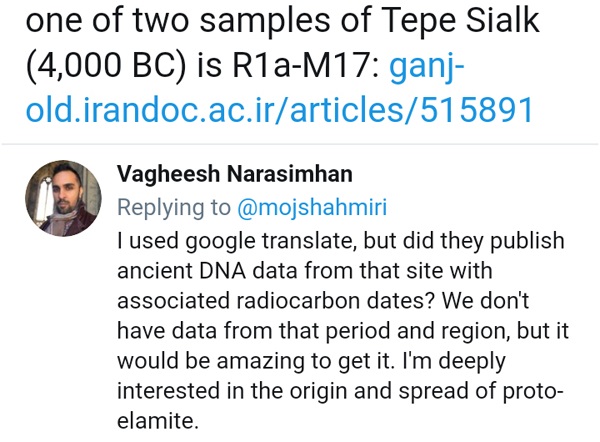Investigating the Possibility of Molecular and Comparative Studies between Samples Found from Some Ancient Iranian and Iranian Ethnicities Today Thesis of the Ministry of Science, Research and Technology - Shahrekord University - Faculty of Basic Sciences Student: Sorena Firoozi Supervisor: Behnaz Saffar Maziar Ashrafian Bonab Year of Publication: 1388 15 Home Keywords: Ancient DNA-r1a-Aryan People-Haplo Group-Abstract Not so long-standing knowledge of molecular ethnography has been able to explain the uninterpretable archaeological findings.
So far, there have been many molecular studies on human bone samples from many parts of the world and related civilizations, such as Egypt. But in Iran, such research has been very limited so far. Previous research has never been done on ancient specimens of the Iranian plateau. Rather, modern examples have always been examined in them. The experiments of Luca Luigi Esfortsa, Dr. Ahadi, and the Cambridge Research Team (2000-2006) all indicate the closeness of the current Iranian tribes to each other. In this study, for the first time on the ancient inhabitants of four regions of Khuzestan (related to the Ilam civilization), *Silk hill (inhabitants of the fourth and fifth millennia BC), Valiran Damavand (related to the Parthian period) and Bam (after Ancient Iran) Molecular analysis of genealogy was done in this way and according to the historical evidence of the Aryan nature of the Parthians (Parthians) and Bami, the lineage and ethnicity of the Elamites and Silks. Also with this research, the common hypothesis of the time of Aryan migration to the Iranian plateau was evaluated. The basis of the present study was to investigate the presence or absence of Haplo, the paternal group of the Eastern Aryan (Indo-Iranian-European) people, as a marker r1a (m17) on the y chromosome. Since this marker is considered as an index of identification of Indo-Iranian (Aryan) peoples, it was considered in this search. DNA extraction was performed by phenol-chlorofrome-isoamyl alcohol method and then the extracted product was pcr. In the next step, the product of the amplification process was applied on two agarose gels and polyacrylamide, and after observing the desired band, the product was sequenced. The results of this study clearly showed that in most of the samples collected from the region of Ilam civilization, the mentioned marker was present and in one of the two studied cases of silks with a longevity of 4000 BC, this The index was seen. Thus, in addition to increasing the probability that a group of people living in these areas were Aryans in the mentioned time periods, the possibility of incorrect hypothesis of Aryan migration in the second and third millennia BC was considered and, on the contrary, this notion Created that this migration, if it existed, could have taken place in a much older time.



